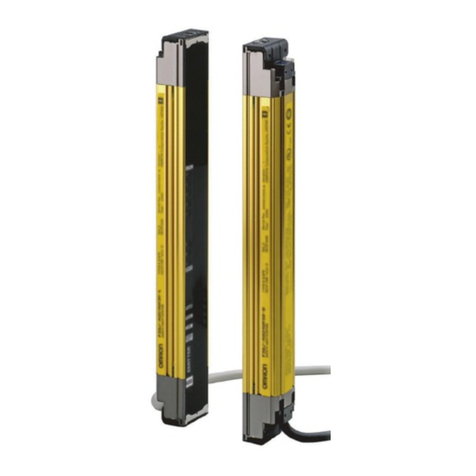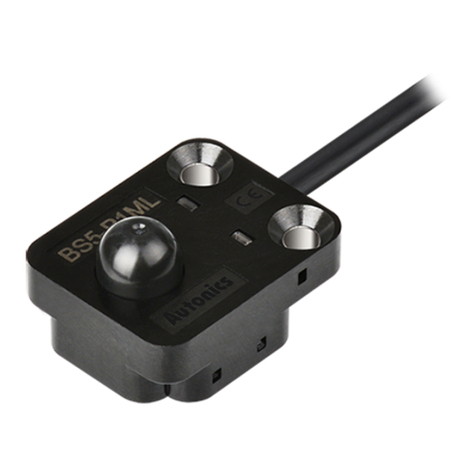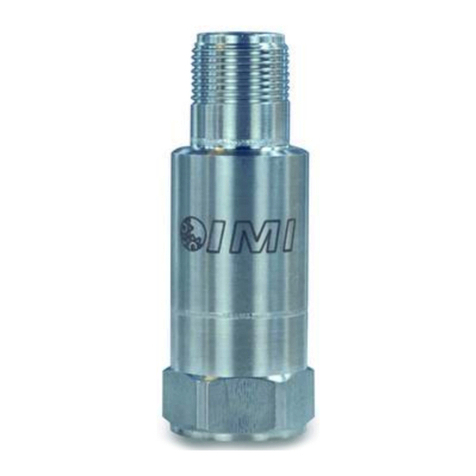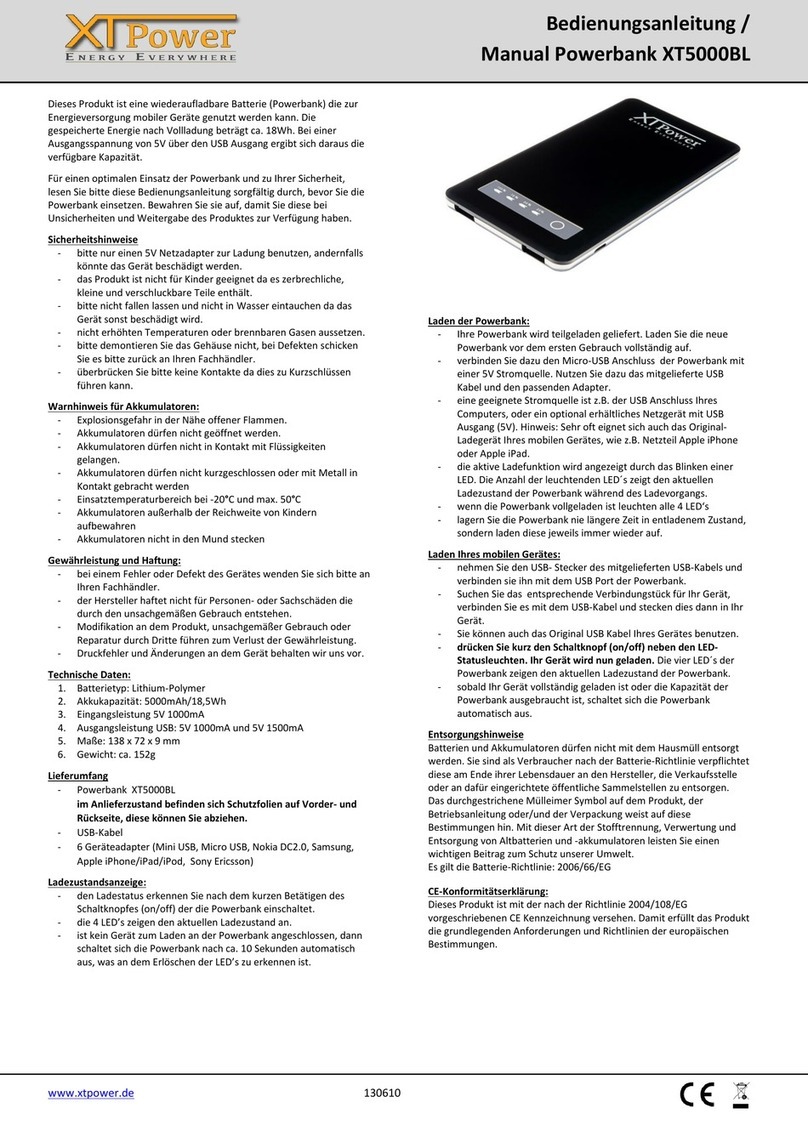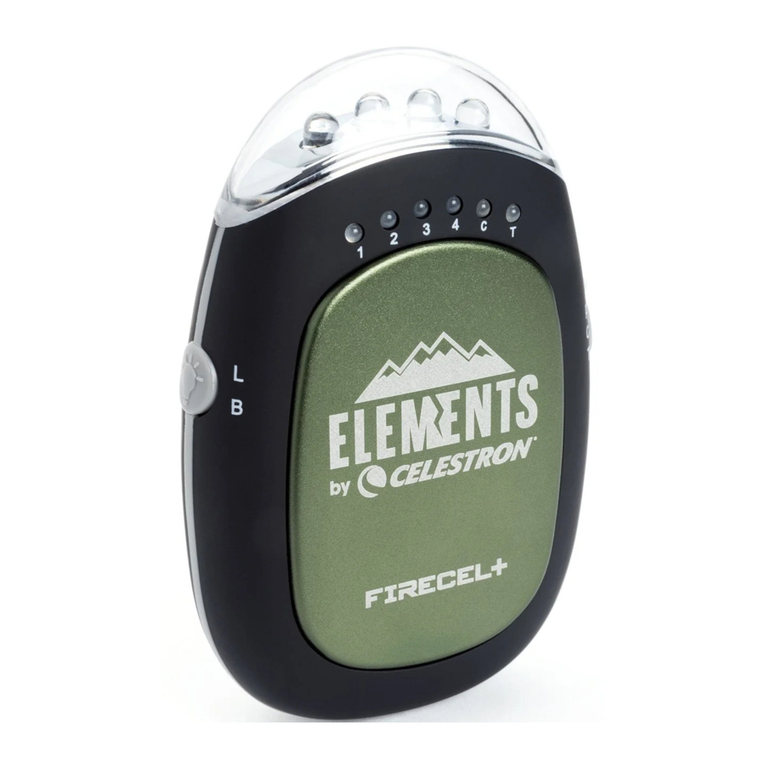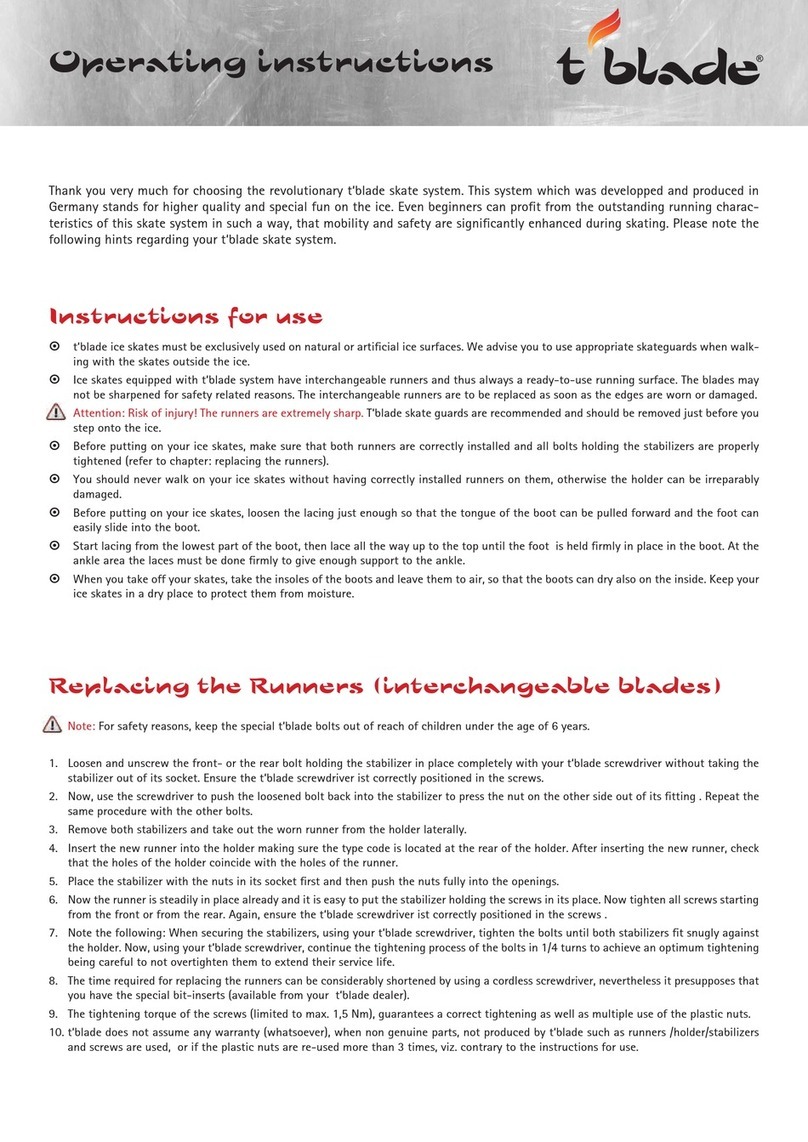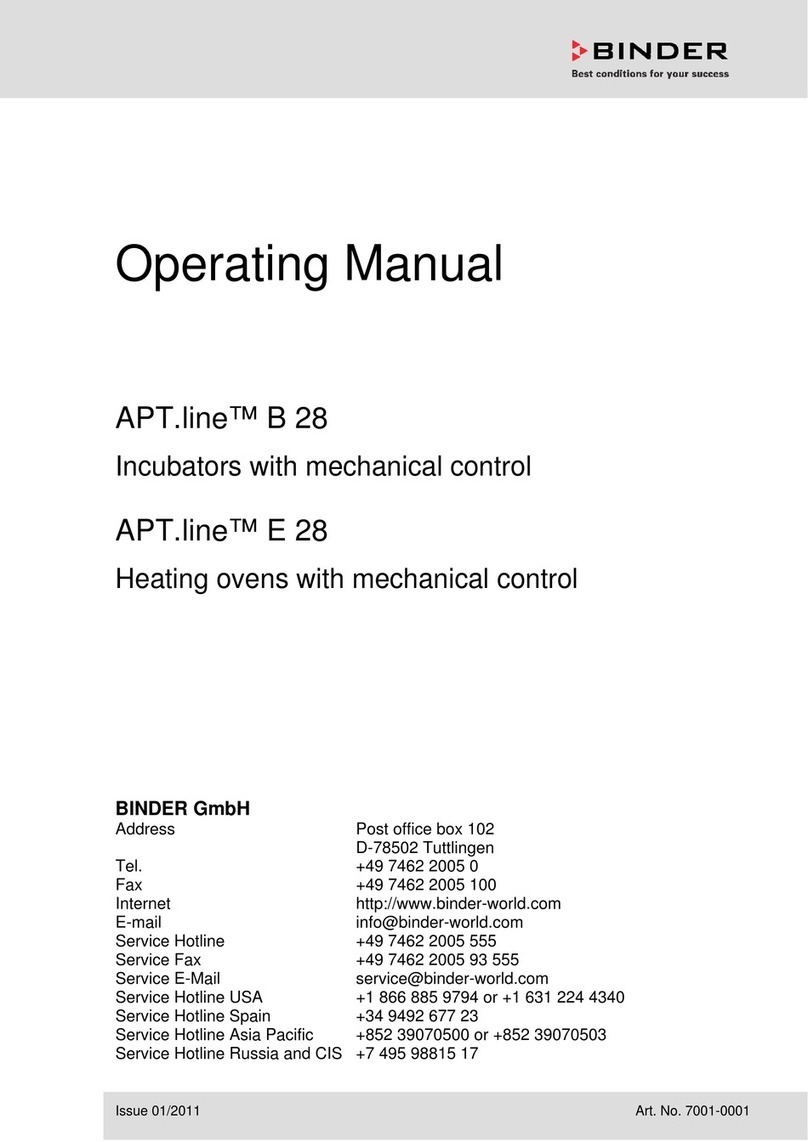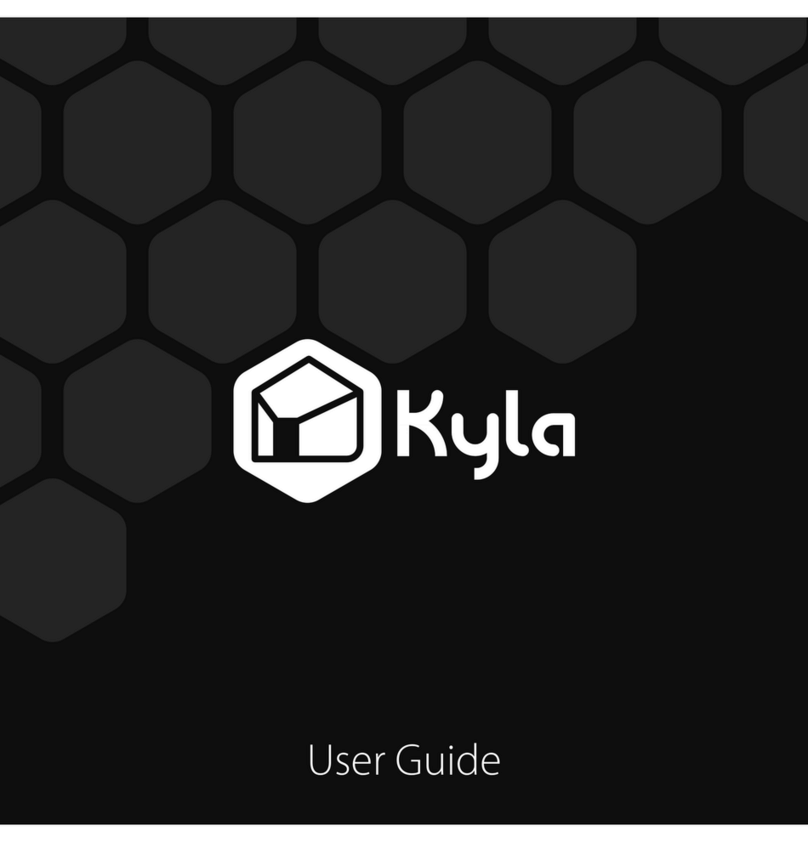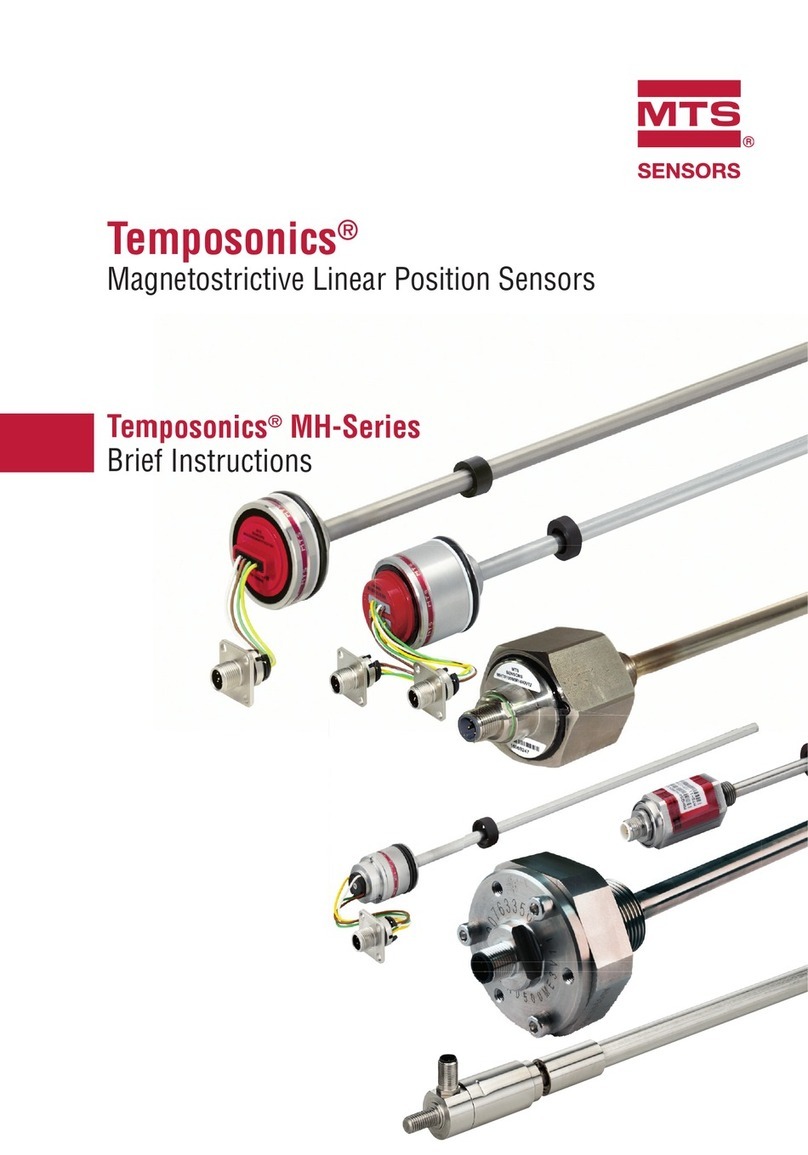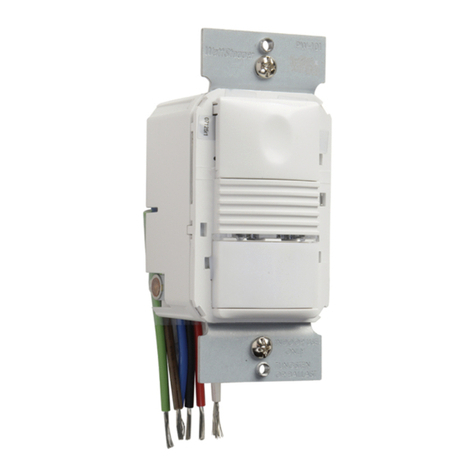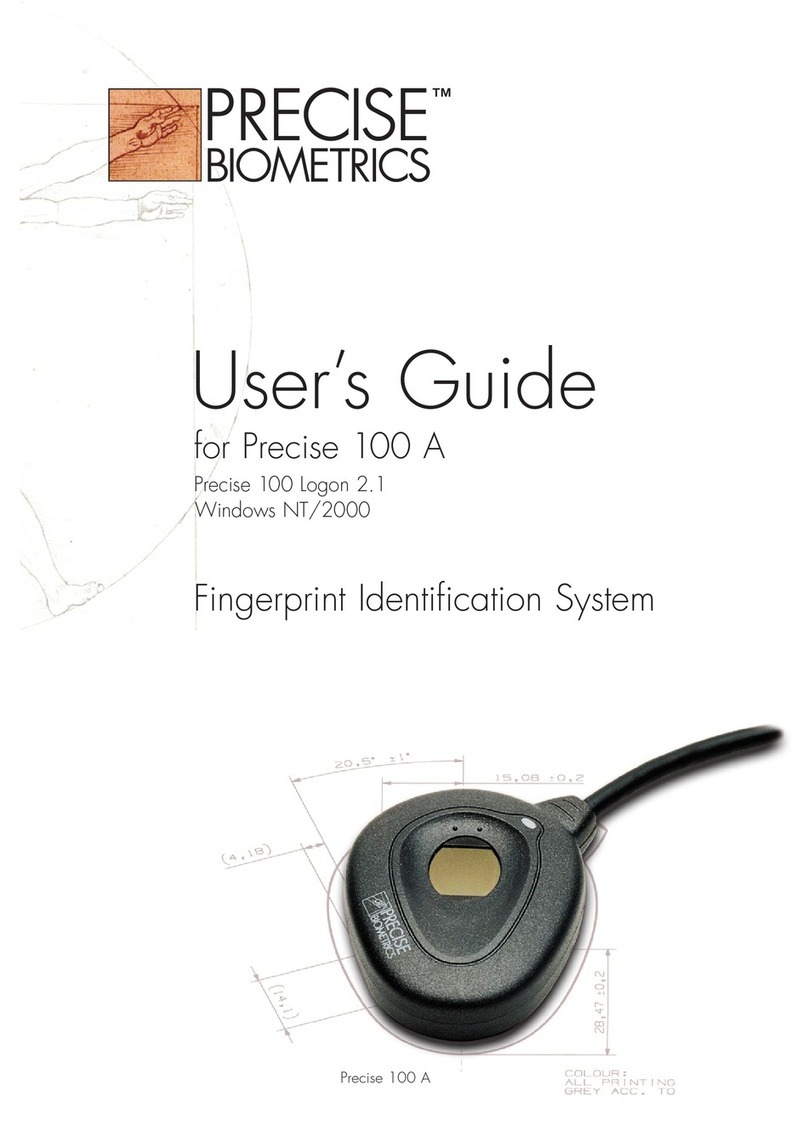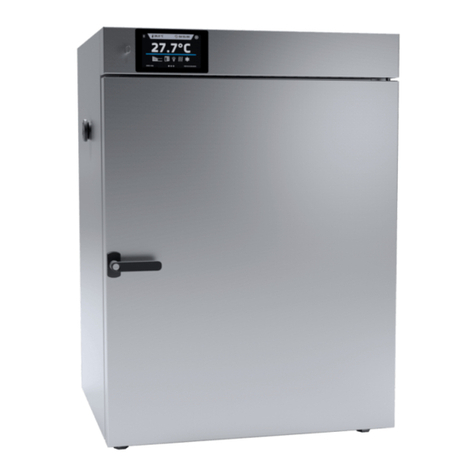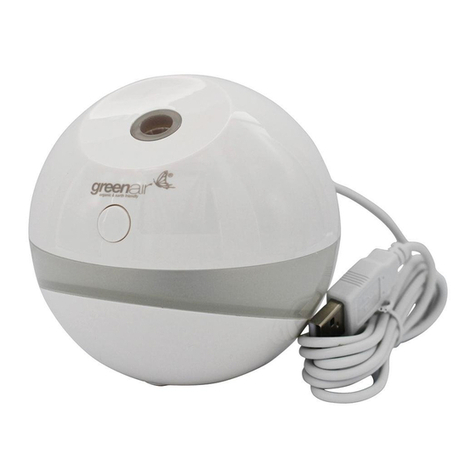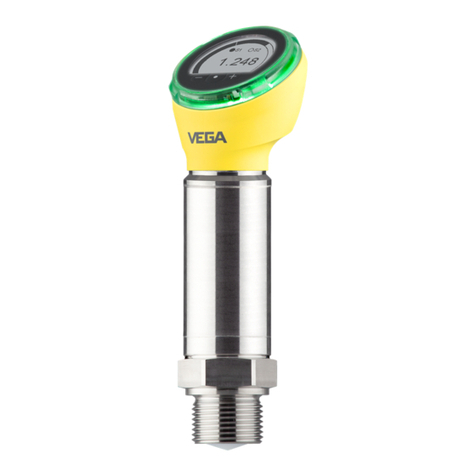Viking LS-911 User manual

PRODUCT MANUAL
Designed, Manufactured and Supported in the USA
COMMUNICATION & SECURITY SOLUTIONS
Analog Line-Sharing Device for IP PBX’s,
VoIP Phone Systems
Features
The LS-911 Line Seizure device offers a
cost-effective, reliable method of handling
911 emergency calls for IP PBX’s and net-
worked phone systems. Designed to be
hooked up to an FXO port, it lets you enjoy
the advantages of conventional analog 911
service, including traceability and 911 call-
back, without having to dedicate an analog
line exclusively for this purpose.
The analog line, normally used by a fax ma-
chine, card reader or other analog device, is
disconnected in the event of a 911 call, and
the LS-911 intelligently handles the priority
emergency call in the shortest time possible
after reconnection to the phone line.
A special 911 recall feature maintains the
availability of the line in the event the emer-
gency call is disconnected, so 911 personnel
can call back to reestablish the connection.
• Routes both incoming and outgoing calls
• Gives priority to emergency devices
• Incoming calls routed to one of two ports by
distinctive ring or quick callback
• Status LED displays mode of operation
• Provides a busy signal to the phone port when
an emergency device is in use
• Store-and-forward and rerouting dialer func-
tions available
• Emergency callback function maintains line
availability for 911 callback
• Normal and fast dialing speeds
• IP PBX or VoIP Phone System sharing analog
phone line with:
- Fax machine
- ATM
- Card reader
• Emergency phone (ie: Viking 1600A Series)
sharing line with above devices
Power: 120VAC / 12VDC 500mA UL listed adapter
provided
Dimensions: 133mm x 89mm x 44mm (5.25” x
3.5” x 1.75”)
Shipping Weight: .9 kg (2 lbs)
Environmental: 0° C to 32° C (32° F to 90° F)
with 5% to 95% non-condensing humidity
Talk Battery: 32V DC
Connections: 6 screw terminals
LS-911
Analog Emergency
Line Sharing Device
March 22, 2013
Applications
Specifications
www.vikingelectronics.com
Information: (715) 386-8861
VIKING

Installation
IMPORTANT: Electronic devices are susceptible to lightning and power station electrical surges from both the AC
outlet and the telephone line. It is recommended that a surge protector be installed to protect against such surges.
12 3
4 5 6
7 8 9
0Send
OR
To FXO Port,
IP PBX
or VoIP
Phone System
Analog
Telephone
Line
Fax Machine Credit Card
Reader
Standard
Analog Phone
TPG
LED 1
C
111
123
on
4 5
VIKING©MODEL LS-911
POWER 12V DC
ANALOG EMERGENCY
LINE SHARING DEVICE
VIKING
ELECTRONICS
HUDSON, WI 54016
12
12
12
DEVICE 1
C.O. IN
STATUS LED
DEVICE 2
(PRIORITY)
1600 MODE
S&F/PROG DIALER
CUSTOM RING
QUICK CALL BACK
1 2 3 4
PROGRAM
5
A. Analog 911 Service for Networked Phone System
12 3
4 5 6
7 8 9
0Send
OR
Analog
Telephone
Line
Fax Machine Credit Card
Reader
Standard
Analog Phone
Emergency Device
(model E-1600A
shown,
not included)
TPG
LED 1
C
111
123
on
4 5
VIKING©MODEL LS-911
POWER 12V DC
ANALOG EMERGENCY
LINE SHARING DEVICE
VIKING
ELECTRONICS
HUDSON, WI 54016
12
12
12
DEVICE 1
C.O. IN
STATUS LED
DEVICE 2
(PRIORITY)
1600 MODE
S&F/PROG DIALER
CUSTOM RING
QUICK CALL BACK
1 2 3 4
PROGRAM
5
B. Analog Emergency Phone Application
2

Note: For a description of dipswitch function, see the Operation section. With the 1600 mode DIP switch OFF, the
LS-911 looks to DIP switch 2 to determine how the dialer operates. DIP switch 1 takes precedence over DIP
switch 2, however, so that if DIP switch 1 is on, the unit does not dial, but just produces ringback for 12 seconds
until it gives the line to the 1600 so it can dial the number programmed in its memory. See Operation section J
for a description.
Step 1 Move DIP switch 5 to the PROGRAM position (ON).
Step 2
Go off-hook on the DEVICE 2 (PRIORITY) port. A double beep will indicate that programming has
been entered. Note: If the DEVICE 2 (PRIORITY) port is connected to an IP PBX or VoIP phone
system and it is not easy to go off-hook on this port, you can unplug the LS-911 from the FXO port and
plug an analog telephone into the DEVICE 2 (PRIORITY) port for the purpose of touch tone program-
ming. When finished with programming, remove the analog telephone and plug the LS-911 back into
the FXO port.
Step 3 Program as shown in section C.
Step 4 To exit touch tone programming, hang up the DEVICE 2 (PRIORITY) phone.
Step 5 Move DIP switch 5 to the RUN position (OFF).
Programming
Switch Position Description
1 OFF 1600 mode disabled
1 ON 1600 mode enabled
2 OFF Store-and-forward dialer
2 ON Re-routing dialer
3 OFF Custom ring disabled
3 ON Custom ring enabled
4 OFF Quick callback disabled
4 ON Quick callback enabled
5 OFF Run mode
5 ON Program mode
VIKING©MODEL LS-911
POWER 12V DC
ANALOG EMERGENCY
LINE SHARING DEVICE
VIKING
ELECTRONICS
HUDSON, WI 54016
12
12
12
DEVICE 1
C.O. IN
STATUS LED
DEVICE 2
(PRIORITY)
1600 MODE
S&F/PROG DIALER
CUSTOM RING
QUICK CALLBACK
1 2 3 4
PROGRAM
5
ON
OFF
1 2 3 4 5
123
on
4 5
A. DIP Switch Programming
B. Touch Tone Programming
C. AR-1 Quick Programming Features (after accessing Programming Mode above)
Description Enter Digits + Location
Re-routing dialer number (1-32 digits*) .......................................................................... 1-32 digits + #00
To add a Qat any point in the dialing string .................................................................... QQ
To add a #at any point in the dialing string .................................................................... Q#
Set dialing speed to normal (120ms on/off, factory setting) ........................................... Q1
Set dialing speed to fast (50ms on/off) ........................................................................... Q2
Normal re-routing dialer (factory setting) ....................................................................... Q3
Hot line re-routing dialer ................................................................................................. Q4
To add a four second pause at any point in the dialing string* ....................................... Q7
To add a one second pause at any point in the dialing string* ....................................... Q8
911 callback timer (1-9 minutes, 0=10 seconds, factory set to 2 minutes) .................... 1 digit + #10
Clear re-routing dialer phone number from memory and set all programming
features back to factory settings ....................................................................................
###
* The
QQ
,
Q
#,
Q
7 and
Q
8 entries each add a single digit to the dialing string.
Note: DIP Switches are shown
in factory default settings.
3

Operation
A. LED Status
B. Outbound Calls with No Recent Call Activity
When there has been no recent call activity, the Status LED will be lit solid, and both ports are connected to an in-
ternally generated 32V DC talk battery. If Device 1 goes offhook, the phone line will be switched to the DEV 1
port. If Device 2 goes offhook, the phone line will be connected to the DEV 2 (PRIORITY) port.
LED Status Operation
Lit Up Power is applied and no recent call activity.
Flash Phone line is in use by DEV 1 or DEV 2, DEV 2 is in the program mode or Recent Ac-
tivity or 911 Call Back timers are running.
Flash after DEV 2
(PRIORITY) hang up The LED will continue to flash until the 911 Call Back timer has elapsed.
Flash after DEV 1
hang up LED will continue to flash until the Recent Activity timer has elapsed.
Flash after Ring In the Quick Call Back Mode, the LED will continue to flash for 20 seconds.
C. Outbound Calls with Recent Call Activity
If Device 1 goes offhook and the DEV 2 (PRIORITY) port is not actually in use or being reserved by the 911 Call
Back Timer (see Section E below) the phone line will be switched to the DEV 1 port. Otherwise, Device 1 gets a
busy signal.
If Device 2 goes offhook and Device 1 was using the line within 12 seconds previously, it is necessary to check
the line to make sure it’s ready to accept a new call. This is because after an incoming CO call is disconnected,
it can take the Central Office up to 12 seconds to provide dial tone to the line, allowing the user to make another
call. If an automatic dialer like the LS-911 tries to dial before the CO is ready the call will not go through. For this
reason the LS-911 is capable of interrogating the line for dial tone to make sure that the phone line is ready for the
emergency call (see Section D below). The procedure the LS-911 follows in this situation depends on the oper-
ational mode selected by the user. See sections G, H, I and J for a more complete description.
In any operational mode, if a call is ringing in on the phone line but has not been answered yet and Device 2 goes
off hook, the LS-911 intentionally answers and hangs up the ringing call before proceeding.
D. Line Interrogation
Line interrogation applies to the Store-and-Forward, Re-Routing Dialer and Hot Line Re-Routing Dialer Modes.
When there has been recent phone line activity and Device 2 goes off hook for an emergency call, the LS-911 in-
terrogates the phone line for dial tone to make sure any previous calls have been disconnected and the phone
line is ready to accept the emergency call. There is no phone line interrogation in the 1600 Mode.
The LS-911 interrogates by seizing the phone line and listening for dial tone for two seconds. If it detects dial
tone, it proceeds with the emergency call according to its programmed mode of operation (see Sections G, H, I
and J). If it doesn’t detect dial tone, it releases the line, waits two seconds, and tries again. If it has not detected
dial tone in eight tries it gives up and produces a fast busy that continues until Device 2 hangs up.
E. 911 Call Back Timer
This is a timer programmable from 1 to 9 minutes or to 10 seconds, factory set to 2 minutes. While it’s running, it
keeps the line switched to the DEV 2 (PRIORITY) port after an emergency call has been disconnected. This is to
facilitate callback by the 911 service in the event of accidental disconnection, with the return emergency call ringing
the DEV 2 (PRIORITY) port. If Device 2 calls the 911 service while the 911 Call Back Timer is running, the call is
allowed to proceed as it would normally, with line interrogation activated if necessary in any mode but the 1600
mode.
4

F. Recent Activity Timer
When Device 1 or Device 2 hangs up from a call, a 12 second Recent Activity Timer is started. The Recent Activity
Timer also starts on power up and when Device 2 hangs up from the programming mode. The LS-911 uses this
timer to track recent call activity as any call activity can affect whether the line is ready to accept dialing for an
emergency call. The Recent Activity Timer is not used by the 1600 or Re-Routing Dialer modes.
G. Store-and-Forward Dialer Mode (DIP Switches 1 and 2 OFF)
When Device 2 goes offhook to make a call, the response depends on whether there has been recent call activity
or not. If both Device 1 and Device 2 have been on hook for 12 seconds or more, the Recent Activity Timer has
elapsed and the LS-911 immediately gives the phone line to the DEV 2 (PRIORITY) port and the touch tones
dialed by the user go directly out on the phone line. If the Recent Activity Timer is running from recent call activity,
simulated dial tone is heard until the user starts dialing. The LS-911 stores up the digits until dialing stops, then
starts producing simulated ringback tones while interrogating the line for dial tone as described above in section
D. If dial tone is detected, the LS-911 seizes the phone line and dials the touch tone string dialed by the user, then
connects the DEV 2 (PRIORITY) port to the line so the emergency call can proceed. If dial tone is not detected
by line interrogation or if the user doesn’t enter any touch tones in 10 seconds the LS-911 produces fast busy as
an error indication.
H. Re-Routing Dialer Mode (DIP Switch 1 OFF, 2 ON and Q3 Programmed)
In this mode, the LS-911 always waits for the user to finish dialing, even if there has been no recent call activity.
This is because, once the dialing is finished, the LS-911 does not redial the digits dialed by the user, but instead
reroutes the call using a phone number stored in its memory. Programming section C describes how to program
this number.
The Re-Routing Dialer Mode would ordinarily be used when an additional digit or digits must be dialed in addition
to 911 to reach emergency services.
When Device 2 goes offhook, the LS-911 produces simulated dial tone until the user starts dialing. It stores up
the digits until dialing stops, then starts producing simulated ringback tones while interrogating the line for dial
tone as described above in Section D. If dial tone is detected, the LS-911 seizes the phone line and dials the
touch tone string stored in its memory in the “#00” memory location, then connects the DEV 2 (PRIORITY) port to
the line so the emergency call can proceed. If dial tone is not detected by line interrogation or if the user doesn’t
enter any touch tones in 10 seconds, the LS-911 produces fast busy as an error indication.
I. Hot Line Re-Routing Dialer Mode (DIP Switch 1 OFF, 2 ON and Q4 Programmed)
In cases where the phone system just hands the 911 call over to the DEV 2 (PRIORITY) port without redialing the
number dialed by the user, the LS-911 can operate as a Hot Line Dialer. It skips the period of up to 10 seconds
of simulated dial tone before dialing starts and looks at the Recent Activity Timer. If there has been no recent call
activity, The LS-911 seizes the phone line, waits 1 second, dials the phone number programmed in its “#00” memory
location and then switches Device 2 to the phone line. If there has been recent call activity, it starts producing
simulated ringback tones while interrogating the line for dial tone as described above in Section D. If dial tone is
detected, the LS-911 seizes the phone line and dials the touch tone string stored in the “#00” memory location,
then connects the DEV 2 (PRIORITY) port to the line so the emergency call can proceed. If dial tone is not de-
tected by line interrogation the LS-911 produces fast busy as an error indication.
5

K. Custom Ring (DIP Switch 3 ON)
Custom Ring Switching relies on “Distinctive” or “Custom Ring” services provided by your local telephone company
as a way of routing incoming calls. Any call with a custom ring cadence will be routed to the DEV 2 (PRIORITY)
port. Inbound calls with standard ring cadence will be routed to the DEV 1 port. The LS-911 accepts both double
and triple ring cadences as custom.
L. Quick Call Back Mode (DIP Switch 4 ON)
To use the Quick Call Back mode, call into the LS-911 from another phone line, listen for a single ring back tone
and hang up. Wait 6 seconds, then call back into the LS-911 within 20 seconds. The LS-911 will route the incoming
call to the DEV 2 (PRIORITY) port instead of defaulting to the DEV 1 port.
Note: When the DEVICE 2 port hangs up from an incoming call that was routed to the DEVICE 2 port by way of
Quick Call Back, the 911 Call Back Timer does not run.
M. Touch Tone Programming Mode (DIP Switch 5 ON)
To enter touch tone programming, move Dipswitch 5 to the ON position and go off hook on the DEV 2 (PRIORITY)
port. See Programming section B. Touch Tone Programming.
N. Inbound Calls with DIP Switches 3 and 4 OFF
If all non-emergency inbound calls should be routed to the DEVICE 1 port, set Dip switches 3 and 4 to the OFF
position.
J. 1600 Mode (DIP Switch 1 ON)
In the 1600 mode, the LS-911 is used with a Viking 1600A Series emergency phone connected on the DEV 2
(PRIORITY) port as Device 2. The dialing is done by the 1600A Series phone rather than the LS-911, and the dial
tone interrogation feature of the LS-911 is not used. When the 1600A Series phone’s call button is pushed, the
LS-911 starts a 12-second timer designed to delay dialing until the Central Office is ready to receive it. In the
meantime, a single ringback is heard in the 1600A Series phone’s speaker to indicate the call is proceeding. When
the pause time is up, the LS-911 switches the line to the DEV 2 (PRIORITY) port and the 1600A Series phone
dials the number programmed in its memory. The operation of the LS-911 and the 1600A Series phone must be
synchronized so the 1600A Series phone starts dialing just after the LS-911 gives it the line. This is done by in-
serting pauses in the 1600A Series phone’s dial string.
Notes: 1. During the 12 seconds of pause time, the LS-911 provides two simulated ringback tones to DEV 2.
When a 1600A Series phone is used on the DEVICE 2 port, only the first of the two simulated ringback
tones will be heard through the speaker of the E-1600A series phone. This is because the 1600A
Series phones are designed to turn off the speaker during the majority of the 12 second pause time.
Users at the 1600A Series phone will hear 10 seconds of silence between the first simulated ringback
tone and the digits dialed by the 1600A Series phone once connected to the line.
2. The LS-911 does not interrogate the phone line for dial tone in the 1600 Mode.
3. The Recent Activity Timer never runs in the 1600 Mode. The DEVICE 2 port is always switched to
the phone line after the 12 second pause time, regardless of recent call activity or lack of recent ac-
tivity.
4. In 1600 Mode, a call ringing in on the phone line could potentially “call crash” with an emergency call
going out on the DEVICE 2 port. The LS-911 intentionally answers and hangs up a ringing call when
the DEVICE 2 port goes off hook, but if a new call starts ringing in during the 12 second pause time
before DEVICE 2 is connected to the phone line, the new ringing call will crash with the device on the
DEVICE 2 port once the pause time expires. This potential does not exist in the other 3 operational
modes as the line interrogation feature will answer and hang up any inbound calls before the DEVICE
2 port is connected to the phone line.
6

O. Non-Working Telephone Line
Obviously, the telephone line must work properly in order for the emergency calls to go through. The LS-911 does
not automatically detect if there is a problem with the phone line and in most modes will connect the DEV 2 (PRI-
ORITY) port to a phone line that is dead and will leave the device on the dead phone line until the 911 Call Back
Timer expires. DEV 2 will hear silence when this occurs. It can be difficult to determine what type of problem
there is when DEV 2 goes silent after being activated. The lack of a working phone line to the LS-911 can be de-
tected by going off hook on the DEV 1 port. If a constant clicking sound is heard on the DEV 1 port instead of dial
tone (about 3 clicks per second), the phone line is dead or not connected properly.
7

IF YOU HAVE A PROBLEM WITH A VIKING PRODUCT, CONTACT: VIKING TECHNICAL SUPPORT AT (715) 386-8666
Our Technical Support Department is available for assistance Monday 8am - 4pm and Tuesday through Friday 8am - 5pm central time. So that we can give you bet-
ter service, before you call please:
1. Know the model number, the serial number and what software version you have (see serial label).
2. Have your Technical Practice in front of you.
3. It is best if you are on site.
RETURNING PRODUCT FOR REPAIR
The following procedure is for equipment that needs repair:
1. Customer must contact Viking's Technical Support Department at 715-386-8666 to obtain a Return Authorization (RA) number. The customer MUST have a com-
plete description of the problem, with all pertinent information regarding the defect, such as options set, conditions, symptoms, methods to duplicate problem, fre-
quency of failure, etc.
2. Packing: Return equipment in original box or in proper packing so that damage will not occur while in transit. Static sensitive equipment such as a circuit board
should be in an anti-static bag, sandwiched between foam and individually boxed. All equipment should be wrapped to avoid packing material lodging in or sticking
to the equipment. Include ALL parts of the equipment. C.O.D. or freight collect shipments cannot be accepted. Ship cartons prepaid to: Viking Electronics, 1531
Industrial Street, Hudson, WI 54016
3. Return shipping address: Be sure to include your return shipping address inside the box. We cannot ship to a PO Box.
4. RA number on carton: In large printing, write the R.A. number on the outside of each carton being returned.
RETURNING PRODUCT FOR EXCHANGE
The following procedure is for equipment that has failed out-of-box (within 10 days of purchase):
1. Customer must contact Viking’s Technical Support at 715-386-8666 to determine possible causes for the problem. The customer MUST be able to step through
recommended tests for diagnosis.
2. If the Technical Support Product Specialist determines that the equipment is defective based on the customer's input and troubleshooting, a Return Authorization
(R.A.) number will be issued. This number is valid for fourteen (14) calendar days from the date of issue.
3. After obtaining the R.A. number, return the approved equipment to your distributor, referencing the R.A. number. Your distributor will then replace the product over
Viking using the same R.A. number.
4. The distributor will NOT exchange this product without first obtaining the R.A. number from you. If you haven't followed the steps listed in 1, 2 and 3,
be aware that you will have to pay a restocking charge.
LIMITED WARRANTY
Viking warrants its products to be free from defects in the workmanship or materials, under normal use and service, for a period of one year from the date of
purchase from any authorized Viking distributor or 18 months from the date manufactured, which ever is greater. If at any time during the warranty period, the
product is deemed defective or malfunctions, return the product to Viking Electronics, Inc., 1531 Industrial Street, Hudson, WI., 54016. Customer must contact
Viking's Technical Support Department at 715-386-8666 to obtain a Return Authorization (R.A.) number.
This warranty does not cover any damage to the product due to lightning, over voltage, under voltage, accident, misuse, abuse, negligence or any damage
caused by use of the product by the purchaser or others. This warranty does not cover non-EWP products that have been exposed to wet or corrosive environ-
ments.
NO OTHER WARRANTIES. VIKING MAKES NO WARRANTIES RELATING TO ITS PRODUCTS OTHER THAN AS DESCRIBED ABOVE AND DISCLAIMS
ANY EXPRESS OR IMPLIED WARRANTIES OR MERCHANTABILITY OR FITNESS FOR ANY PARTICULAR PURPOSE.
EXCLUSION OF CONSEQUENTIAL DAMAGES. VIKING SHALL NOT, UNDER ANY CIRCUMSTANCES, BE LIABLE TO PURCHASER, OR ANY OTHER
PARTY, FOR CONSEQUENTIAL, INCIDENTAL, SPECIAL OR EXEMPLARY DAMAGES ARISING OUT OF OR RELATED TO THE SALE OR USE OF THE
PRODUCT SOLD HEREUNDER.
EXCLUSIVE REMEDY AND LIMITATION OF LIABILITY. WHETHER IN AN ACTION BASED ON CONTRACT, TORT (INCLUDING NEGLIGENCE OR STRICT
LIABILITY) OR ANY OTHER LEGAL THEORY, ANY LIABILITY OF VIKING SHALL BE LIMITED TO REPAIR OR REPLACEMENT OF THE PRODUCT, OR AT
VIKING'S OPTION, REFUND OF THE PURCHASE PRICE AS THE EXCLUSIVE REMEDY AND ANY LIABILITY OF VIKING SHALL BE SO LIMITED.
IT IS EXPRESSLY UNDERSTOOD AND AGREED THAT EACH AND EVERY PROVISION OF THIS AGREEMENT WHICH PROVIDES FOR DISCLAIMER
OF WARRANTIES, EXCLUSION OF CONSEQUENTIAL DAMAGES, AND EXCLUSIVE REMEDY AND LIMITATION OF LIABILITY, ARE SEVERABLE FROM
ANY OTHER PROVISION AND EACH PROVISION IS A SEPARABLE AND INDEPENDENT ELEMENT OF RISK ALLOCATION AND IS INTENDED TO BE EN-
FORCED AS SUCH.
DOD# 262 Printed in the U.S.A.
ZF301680 Rev D
Due to the dynamic nature of the product design, the information contained in this document is subject to change without notice. Viking
Electronics, and its affiliates and/or subsidiaries assume no responsibility for errors and omissions contained in this information. Revi-
sions of this document or new editions of it may be issued to incorporate such changes.
Warranty
Product Support: (715) 386-8666
If trouble is experienced with the LS-911, for repair or warranty information, please contact:
Viking Electronics, Inc., 1531 Industrial Street, Hudson, WI 54016 (715) 386-8666
If the equipment is causing harm to the telephone network, the telephone company may request
that you disconnect the equipment until the problem is resolved.
Connection to Party Line Service is subject to State Tariffs. Contact the state public utility com-
mission, public service commission or corporation commission for information.
WHEN PROGRAMMING EMERGENCY NUMBERS AND (OR) MAKING TEST CALLS TO
EMERGENCY NUMBERS:
Remain on the line and briefly explain to the dispatcher the reason for the call. Perform such
activities in the off-peak hours, such as early morning or late evenings.
It is recommended that the customer install an AC surge arrester in the AC outlet to which this
device is connected. This is to avoid damaging the equipment caused by local lightning strikes
and other electrical surges.
PART 15 LIMITATIONS
This equipment has been tested and found to comply with the limits for a Class Adigital
device, pursuant to Part 15 of the FCC Rules. These limits are designed to provide
reasonable protection against harmful interference when the equipment is operated in
a commercial environment. This equipment generates, uses, and can radiate radio fre-
quency energy and, if not installed and used in accordance with the instruction manual,
may cause harmful interference to radio communications. Operation of this equipment
in a residential area is likely to cause harmful interference in which case the user will
be required to correct the interference at his own expense.
FCC REQUIREMENTS
This equipment complies with Part 68 of the FCC rules and the requirements adopted by the ACTA.
On the side of this equipment is a label that contains, among other information, a product identifier in
the format US:AAAEQ##TXXXX. If requested, this number must be provided to the telephone com-
pany.
The REN is used to determine the number of devices that may be connected to a telephone line. Ex-
cessive REN's on a telephone line may result in the devices not ringing in response to an incoming
call. In most but not all areas, the sum of the REN's should not exceed five (5.0) To be certain of the
number of devices that may be connected to a line, as determined by the total REN's, contact the
local telephone company. For products approved after July 23, 2001, the REN for this product is part
of the product identifier that has the format US:AAAEQ##TXXXX. The digits represented by ## are
the REN without a decimal point (e.g., 03 is a REN of 0.3). For earlier products, the REN is separately
shown on the label.
The plug used to connect this equipment to the premises wiring and telephone network must comply
with the applicable FCC Part 68 rules and requirements adopted by the ACTA. If your home has spe-
cially wired alarm equipment connected to the telephone line, ensure the installation of this LS-911
does not disable your alarm equipment. If you have questions about what will disable alarm equipment,
consult your telephone company or a qualified installer.
If the LS-911 causes harm to the telephone network, the telephone company will notify you in advance
that temporary discontinuance of service may be required. But if advance notice isn't practical, the
telephone company will notify the customer as soon as possible. Also, you will be advised of your right
to file a complaint with the FCC if you believe it is necessary.
The telephone company may make changes in its facilities, equipment, operations, or procedures that
could affect the operation of the equipment. If this happens, the telephone company will provide ad-
vance notice in order for you to make the necessary modifications to maintain uninterrupted service.
8
Table of contents
Other Viking Accessories manuals
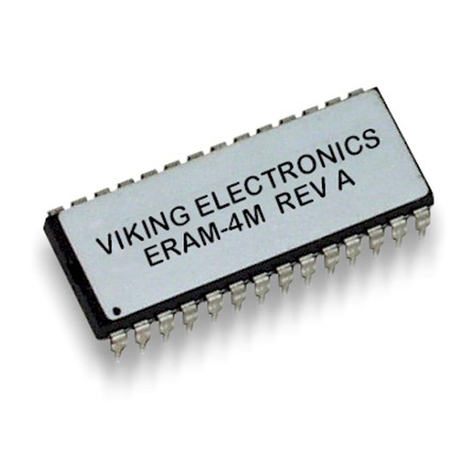
Viking
Viking ERAM-4M Instructions for use
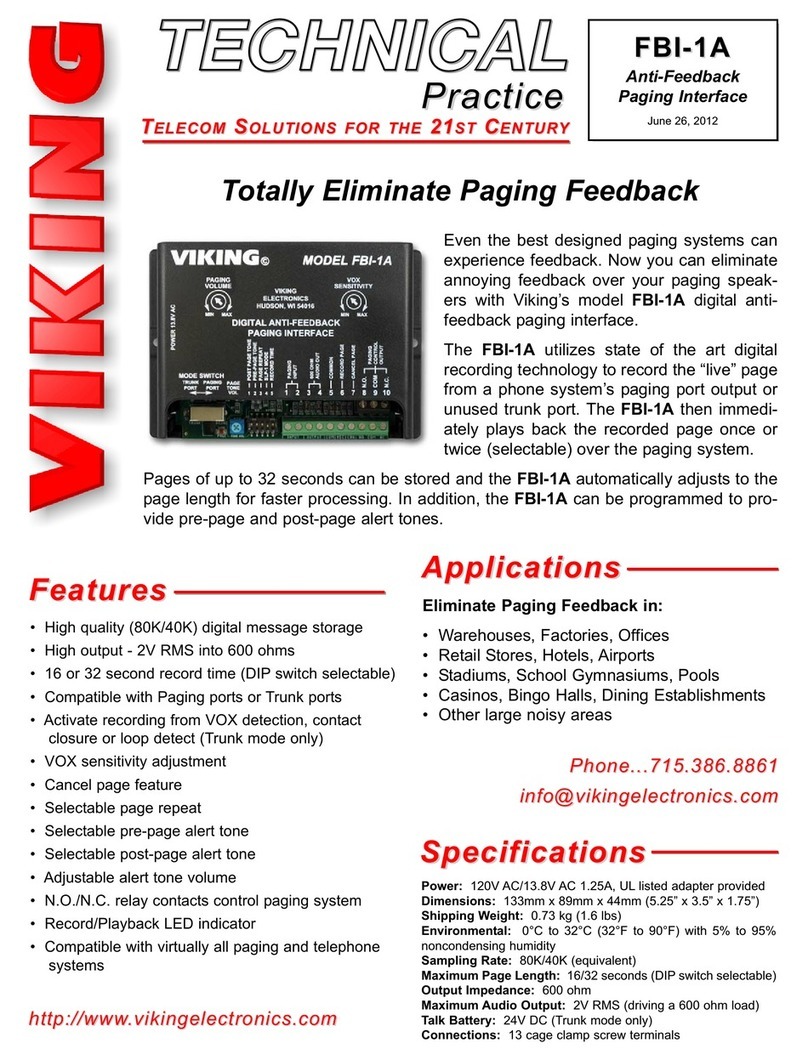
Viking
Viking FBI-1A Instructions for use

Viking
Viking EP16W User manual
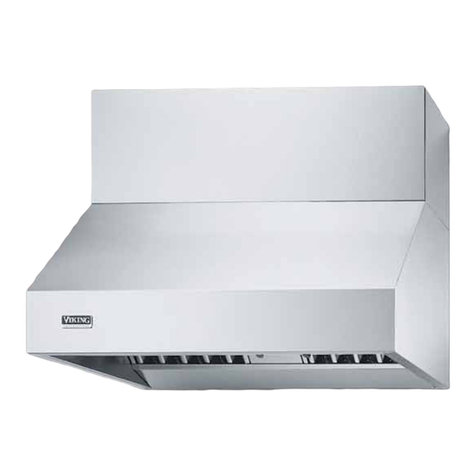
Viking
Viking DBCV3082 User manual
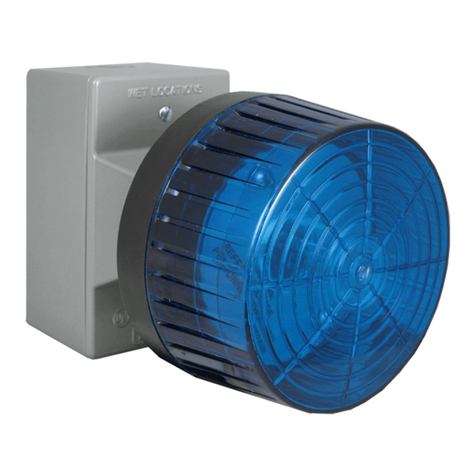
Viking
Viking BLK-4 User manual
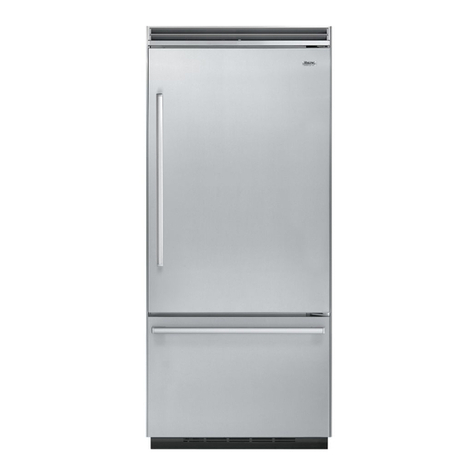
Viking
Viking DDBB536RSS Technical manual
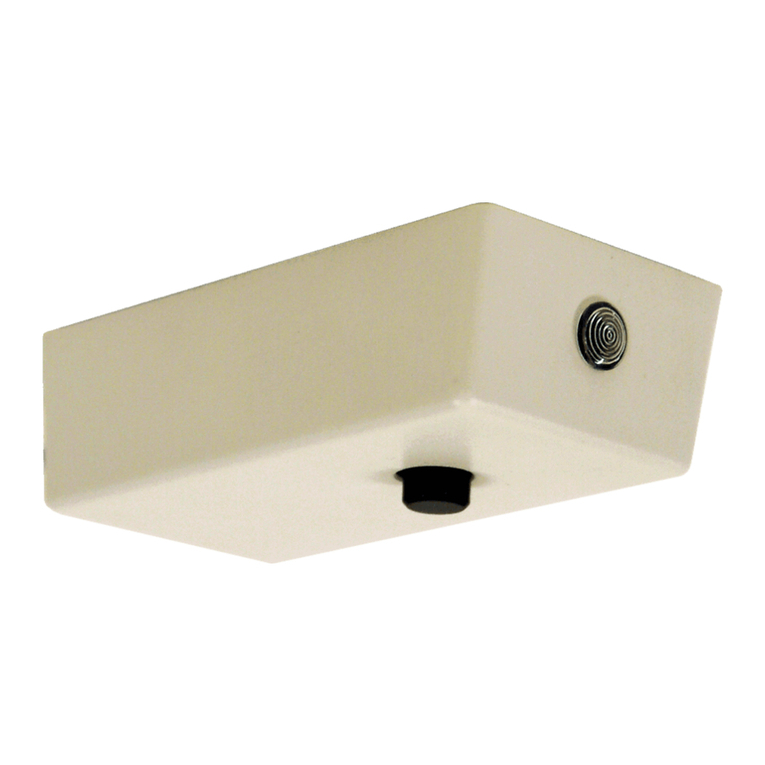
Viking
Viking PB-1 Instructions for use

Viking
Viking FRDI1240D User manual
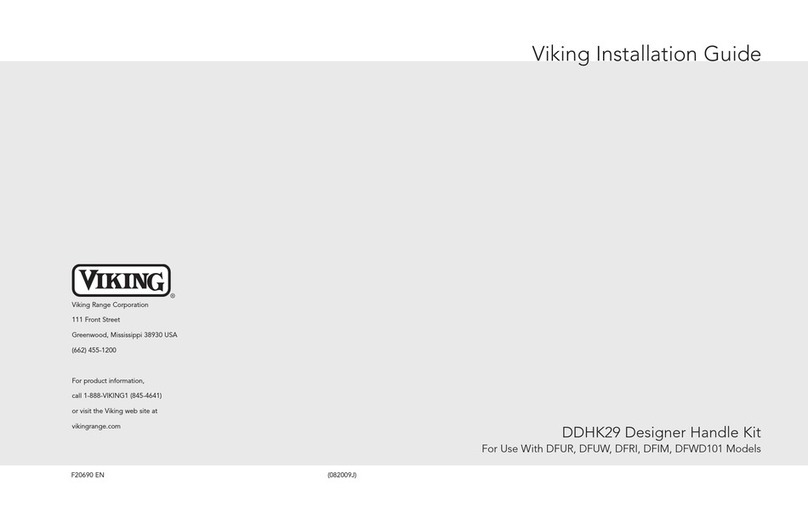
Viking
Viking Designer DFUW1441CR User manual
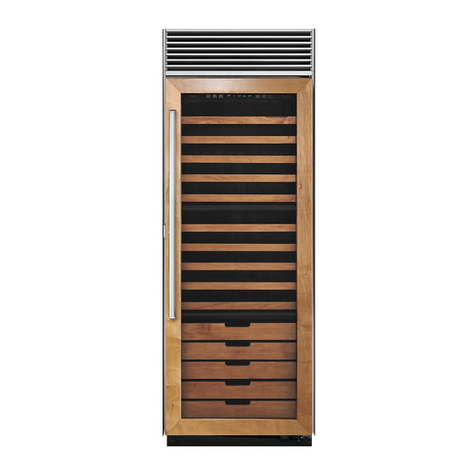
Viking
Viking DFWB300R User manual
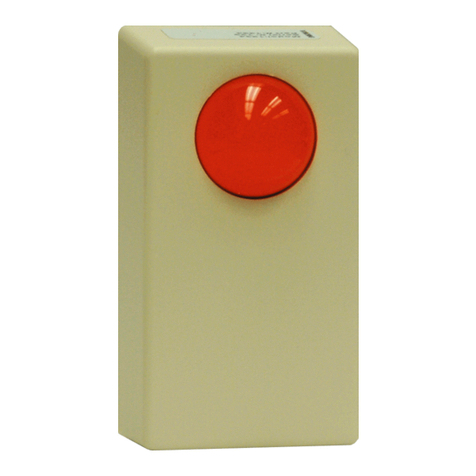
Viking
Viking LPL-1 Instructions for use
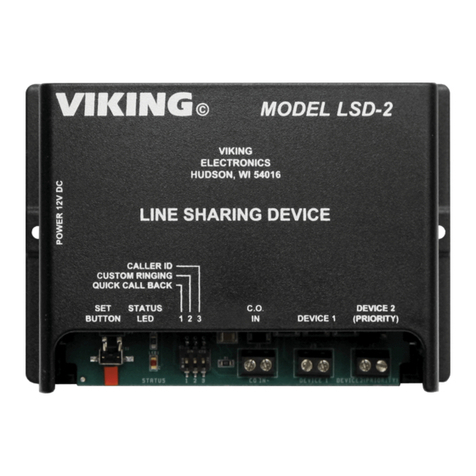
Viking
Viking LSD-2 User manual
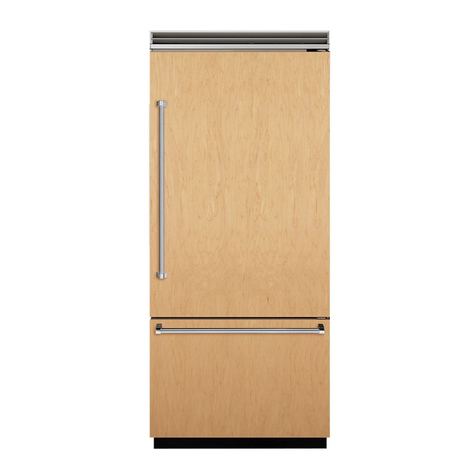
Viking
Viking DFBB536R User manual

Viking
Viking DFWB300R User manual
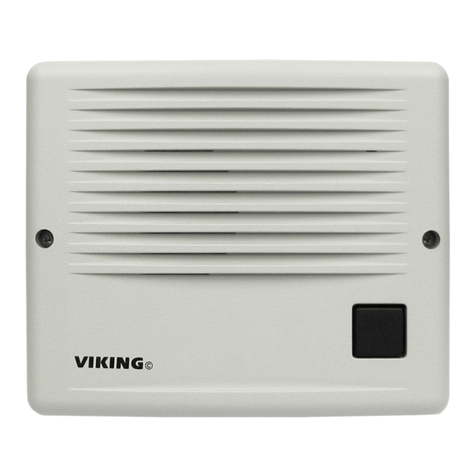
Viking
Viking SR-1 Instructions for use
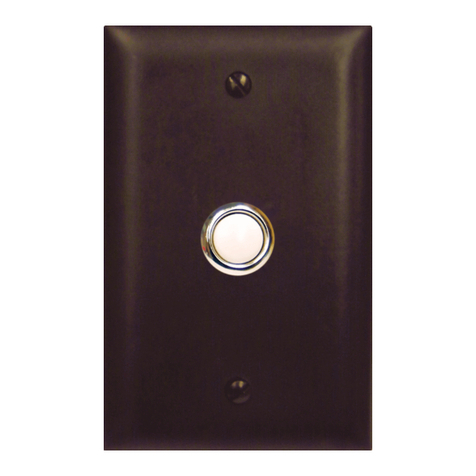
Viking
Viking DB40 Instructions for use

Viking
Viking SR-1 User manual
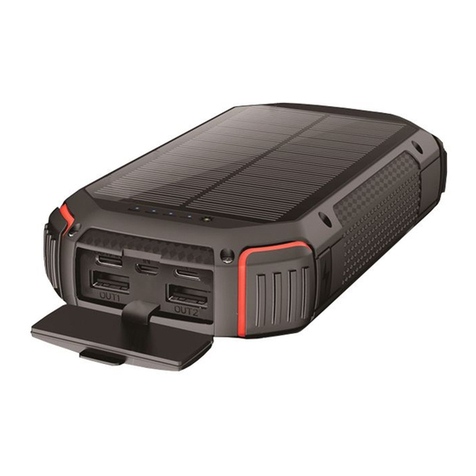
Viking
Viking E16W User manual
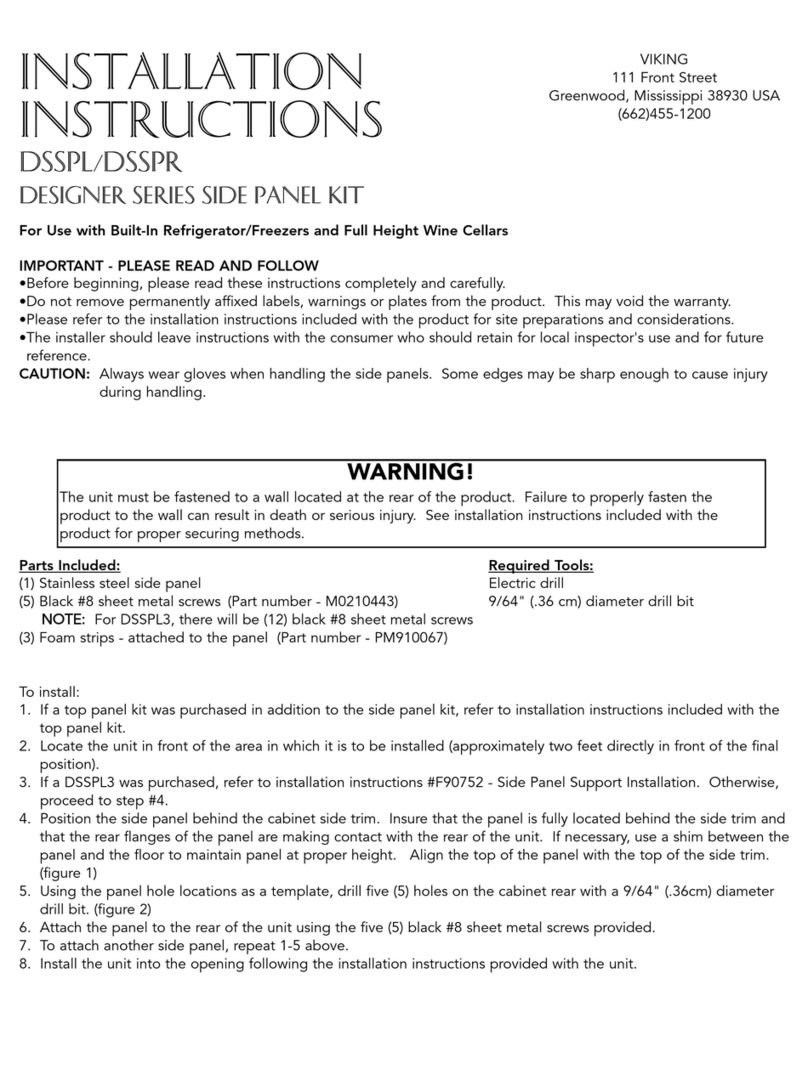
Viking
Viking DDWB301CRSS User manual

Viking
Viking FXI-1A User manual





